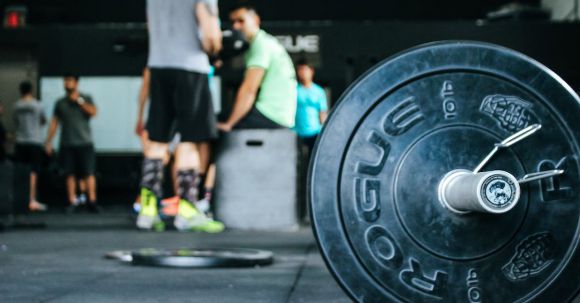Physical exercise has long been known to have numerous benefits for both the body and mind. While many people are familiar with the physical benefits of strength training, such as increased muscle strength and improved cardiovascular health, fewer may be aware of the positive impact it can have on mental health. Strength training, which involves resistance exercises using weights or other forms of resistance, has been shown to be particularly effective in improving mental well-being. In this article, we will explore the various benefits of strength training for mental health.
Strength training
Are you tired of feeling stuck in your strength training routine? Do you want to take your workouts to the next level and see faster results? If so, then it's time to supercharge your strength training workouts! In this article, we will explore some tips and techniques to help you maximize your time in the gym and achieve your fitness goals.
Set Clear Goals
Before you start any workout, it's important to set clear goals for yourself. What do you want to achieve with your strength training? Is it to build muscle, increase your overall strength, or improve your athletic performance? By setting specific goals, you can tailor your workouts to focus on the areas that will help you achieve those goals.Vary Your Routine
One mistake many people make in their strength training is sticking to the same routine day after day. While consistency is important, it's also essential to vary your workouts to keep your body challenged and prevent plateauing. Incorporate different exercises, change up the order of your routine, or try new equipment to keep things interesting and stimulate muscle growth.Focus on Compound Movements
Compound movements are exercises that work multiple muscle groups at the same time. These exercises, such as squats, deadlifts, and bench presses, are highly effective for building strength and muscle mass. By incorporating compound movements into your workouts, you can target multiple muscle groups simultaneously, saving time and maximizing your results.Add High-Intensity Interval Training (HIIT)
High-Intensity Interval Training (HIIT) is a great way to supercharge your strength training workouts. By alternating between short bursts of intense exercise and periods of rest, HIIT can help you burn more calories, increase your cardiovascular fitness, and boost your metabolism. Incorporate HIIT exercises, such as kettlebell swings or burpees, into your strength training routine for an extra challenge.Focus on Progressive Overload
Progressive overload is the key to continually improving your strength and muscle growth. It involves gradually increasing the difficulty of your workouts over time. This can be done by increasing the weight you lift, the number of reps you perform, or the intensity of your exercises. By consistently challenging your muscles, you can stimulate growth and see faster results.Fuel Your Body Properly
To get the most out of your strength training workouts, it's essential to fuel your body properly. Make sure you're eating a balanced diet that includes a mix of protein, carbohydrates, and healthy fats. Protein is especially important for muscle repair and growth, so be sure to include sources such as lean meats, eggs, and legumes in your meals. Additionally, stay hydrated by drinking plenty of water before, during, and after your workouts.Get Adequate Rest and Recovery
While it's important to push yourself during your strength training workouts, it's equally important to give your body time to rest and recover. Rest days are crucial for allowing your muscles to repair and grow. Aim for at least one or two rest days per week and listen to your body. If you're feeling excessively sore or fatigued, it may be a sign that you need more rest.Supercharge Your Strength Training Workouts Today
By implementing these tips and techniques, you can supercharge your strength training workouts and see faster results. Remember to set clear goals, vary your routine, focus on compound movements, add HIIT, and practice progressive overload. Fuel your body properly, get adequate rest and recovery, and most importantly, stay consistent. With dedication and hard work, you'll be well on your way to achieving your fitness goals and taking your strength training to the next level.
When it comes to strength training, there are two popular approaches: full body workouts and split training. Both methods have their own benefits and drawbacks, making it challenging to determine which one is better for building strength. In this article, we will compare these two training styles and help you decide which one suits your fitness goals the best.
Understanding Full Body Training
Full body training involves working out all major muscle groups in a single session. This means including exercises that target your upper body, lower body, and core in one comprehensive workout. Full body training typically requires less time commitment, making it a popular choice for individuals with busy schedules.The Advantages of Full Body Training
One of the main advantages of full body training is its efficiency. By targeting all major muscle groups in one session, you can maximize your workout time and stimulate overall muscle growth. Additionally, full body workouts are excellent for beginners as they provide a solid foundation for building strength and improving overall fitness. Another benefit of full body training is the increased frequency of muscle stimulation. Since each muscle group is targeted multiple times per week, you can experience faster strength gains compared to split training, where muscle groups are worked on less frequently. This increased frequency also helps improve muscle coordination and balance.Understanding Split Training
Split training, on the other hand, involves dividing your workouts into different muscle groups or body parts. This method allows you to focus on specific muscle groups during each session, allowing for more targeted training and greater intensity. Split training is typically favored by intermediate and advanced lifters who are looking to increase muscle mass and strength in specific areas.The Advantages of Split Training
One of the main advantages of split training is the ability to focus on specific muscle groups. By dedicating an entire workout session to a particular muscle group, you can target it with greater intensity and volume. This targeted approach can lead to greater muscle hypertrophy and strength gains in the long run. Split training also allows for more variety in your workouts. By focusing on different muscle groups on different days, you can incorporate a wider range of exercises and training techniques. This variety not only keeps your workouts interesting but also helps prevent plateaus and overuse injuries.Which Training Style Is Better for Strength?
There is no definitive answer to which training style is better for strength, as it ultimately depends on your individual goals and preferences. Full body training is a great option for beginners or individuals with limited time, as it provides a balanced approach to strength training and improves overall fitness. On the other hand, split training can be more effective for individuals aiming to increase muscle mass and strength in specific areas. By targeting specific muscle groups with greater intensity, you can achieve greater hypertrophy and strength gains in those areas.Conclusion: Choosing What Works Best for You
In the end, the best training style for strength is the one that aligns with your goals, preferences, and schedule. If you are new to strength training or have limited time, full body workouts can provide a solid foundation and overall fitness improvement. On the other hand, if you are looking to increase muscle mass and strength in specific areas, split training may be the better option for you. Regardless of the training style you choose, consistency, progressive overload, and proper form are key to achieving your strength goals.
Strength training is a key component of any fitness routine. Whether you're looking to improve your athletic performance, build muscle, or simply increase your overall strength and endurance, incorporating strength training exercises into your workouts is essential. In this ultimate guide, we will explore the benefits of strength training, different types of strength training exercises, and how to create an effective strength training program.
Benefits of Strength Training
Strength training offers numerous benefits beyond just building muscle mass. It can help improve bone density, increase metabolism, enhance flexibility, and reduce the risk of injury. Additionally, strength training has been shown to improve mental health, boost confidence, and enhance overall quality of life. By incorporating strength training into your routine, you can experience these benefits and more.Types of Strength Training Exercises
There are various types of strength training exercises that target different muscle groups and achieve different goals. Here are some of the most common types of strength training exercises: 1. Compound Exercises: Compound exercises are multi-joint movements that work multiple muscle groups simultaneously. Examples include squats, deadlifts, bench presses, and pull-ups. These exercises are great for building overall strength and muscle mass. 2. Isolation Exercises: Isolation exercises target specific muscle groups and involve single-joint movements. Examples include bicep curls, tricep extensions, and calf raises. These exercises are effective for targeting and isolating specific muscles. 3. Bodyweight Exercises: Bodyweight exercises use your own body weight as resistance. Examples include push-ups, planks, lunges, and squats. These exercises are great for building functional strength and can be done anywhere, without the need for equipment. 4. Resistance Training: Resistance training involves using external weights or resistance bands to provide added resistance during exercises. Examples include dumbbell curls, barbell squats, and resistance band rows. Resistance training allows you to progressively overload your muscles, leading to strength gains.Creating an Effective Strength Training Program
To create an effective strength training program, consider the following factors: 1. Set Goals: Determine what you want to achieve with your strength training program. Whether it's building muscle, increasing strength, or improving athletic performance, having clear goals will help guide your workouts. 2. Frequency: Decide how often you will incorporate strength training into your routine. Aim for at least two to three days per week to allow for proper muscle recovery. 3. Exercise Selection: Choose a variety of exercises that target all major muscle groups. Include compound exercises for overall strength and isolation exercises to target specific muscles. 4. Reps and Sets: Determine the number of repetitions (reps) and sets you will perform for each exercise. For strength and muscle building, aim for 8-12 reps per set. For endurance, aim for 12-15 reps per set. 5. Progression: As you become stronger, gradually increase the weight, reps, or sets to continue challenging your muscles. This progressive overload will lead to strength gains over time. 6. Rest and Recovery: Allow your muscles time to rest and recover between workouts. Aim for 48-72 hours of rest between strength training sessions targeting the same muscle groups. In conclusion, strength training is a crucial component of any fitness routine. By incorporating different types of strength training exercises and following an effective program, you can reap the many benefits of increased strength, improved muscle tone, and overall enhanced physical performance. Remember to set goals, choose the right exercises, and progressively challenge yourself to continue making progress. Strength training is not only beneficial for your physical health but can also have a positive impact on your mental well-being. Get started today and unlock your full strength potential!
Strength training can be a challenging and demanding journey. It requires dedication, consistency, and perseverance to see results. However, it's not uncommon to hit a roadblock and lose motivation along the way. If you're struggling to stay motivated in your strength training journey, don't worry, you're not alone. In this article, we'll explore some effective strategies to help you stay motivated and continue making progress towards your fitness goals.
Set Realistic and Achievable Goals
One of the keys to staying motivated in your strength training journey is to set realistic and achievable goals. Having clear goals gives you something to work towards and helps you stay focused. However, it's important to set goals that are within your reach. Setting unrealistic goals can be demotivating when you don't see the progress you expected. Break down your long-term goals into smaller, more manageable milestones, and celebrate each achievement along the way.Find Your Why
Understanding your motivation for strength training is crucial to staying motivated. Ask yourself why you started this journey in the first place. Is it to improve your overall health? To gain strength and confidence? To achieve a specific aesthetic goal? Whatever your reason may be, remind yourself of it regularly. Write it down and keep it somewhere visible. Having a strong "why" can help you stay focused and committed, especially during tough times.Mix Up Your Routine
Doing the same workouts day in and day out can quickly become monotonous and demotivating. To keep things fresh and exciting, consider mixing up your routine. Try new exercises, vary the intensity, or experiment with different training methods. Not only will this prevent boredom, but it can also help you break through plateaus and see new progress. Additionally, consider incorporating some fun activities or classes into your routine to keep things interesting.Track Your Progress
Tracking your progress is a powerful way to stay motivated. It allows you to see how far you've come and provides a sense of accomplishment. Keep a training journal or use a fitness app to record your workouts, weights lifted, and any other relevant data. Take progress photos regularly and compare them side by side. Seeing tangible evidence of your progress can be incredibly motivating and inspire you to keep pushing forward.Find an Accountability Partner
Having someone to hold you accountable can make a world of difference in your motivation levels. Find a training buddy or join a fitness community where you can connect with like-minded individuals. Share your goals and progress with them, and check in regularly to keep each other motivated and on track. Having someone to share your triumphs and struggles with can provide the support and encouragement you need to stay motivated.Reward Yourself
Rewarding yourself for your hard work and achievements is an effective way to stay motivated. Set small rewards for yourself when you reach certain milestones or achieve specific goals. Treat yourself to something you enjoy, like a massage, a new workout outfit, or a relaxing day off. These rewards not only give you something to look forward to but also reinforce the positive behavior and progress you've made.Stay Consistent, Stay Motivated
Consistency is key in any strength training journey. It's easy to get discouraged when progress seems slow or when life gets in the way. However, staying consistent through the ups and downs is what will ultimately lead to long-term success. Remind yourself of your goals, find ways to stay motivated, and keep showing up for yourself. The journey may not always be easy, but the results will be worth it. In conclusion, staying motivated in your strength training journey requires setting realistic goals, finding your why, mixing up your routine, tracking your progress, finding an accountability partner, rewarding yourself, and staying consistent. By implementing these strategies, you can overcome obstacles, stay motivated, and continue making progress towards your fitness goals. Remember, the journey may have its challenges, but the rewards are well worth the effort.
Balance is a fundamental aspect of our daily lives. It allows us to navigate through various activities, from walking and running to performing more complex movements. As we age, our balance naturally tends to decline, which can increase the risk of falls and injuries. However, there is good news – strength training can be a powerful tool in improving balance and maintaining stability.
Understanding the Role of Strength Training
Strength training, also known as resistance training or weightlifting, involves the use of external resistance to build and strengthen muscles. Traditionally, it has been associated with building muscle size and boosting overall strength. However, recent research suggests that strength training also plays a crucial role in enhancing balance and stability.Building Strong Muscles for Stability
One of the primary ways strength training improves balance is through building strong muscles. Our muscles act as the body's support system, helping to maintain proper alignment and stability. When these muscles are weak or imbalanced, it can lead to poor posture and compromised balance. By engaging in strength training exercises, we can target specific muscle groups, such as the quadriceps, hamstrings, glutes, and core, which are essential for maintaining balance. Strengthening these muscles not only helps to improve stability but also allows for better control of movements and reduces the risk of falls.Enhancing Proprioception and Body Awareness
Proprioception, or the body's ability to sense its position in space, is another critical factor in balance. Strength training can improve proprioception by challenging the body's awareness and coordination during exercises. For example, performing squats or lunges on an unstable surface, such as a balance board or Bosu ball, forces the body to engage additional muscles to maintain balance. Moreover, strength training exercises often involve multi-joint movements that require coordination between different muscle groups. This coordination helps to improve proprioception, allowing individuals to have a better sense of their body's position and movement, ultimately leading to improved balance.Preventing Muscle Loss and Osteoporosis
As we age, muscle loss, known as sarcopenia, becomes more prevalent. This loss of muscle mass can significantly impact balance and stability. Strength training not only helps to prevent muscle loss but also promotes muscle growth, even in older adults. Additionally, strength training has been shown to increase bone density, which is crucial for preventing osteoporosis, a condition characterized by weak and brittle bones. Stronger bones provide a solid foundation for better balance and reduce the risk of fractures in the event of a fall.Incorporating Strength Training into Your Routine
To reap the benefits of strength training for balance improvement, it is essential to incorporate specific exercises into your routine. Some effective strength training exercises for balance include squats, lunges, deadlifts, step-ups, and planks. It is recommended to start with lighter weights and gradually increase the resistance as you become more comfortable and confident in your abilities. It is also important to maintain proper form during strength training exercises to avoid injury. If you are unsure about proper technique, consider working with a qualified personal trainer who can guide you through the exercises and ensure you are performing them correctly.Conclusion: Reap the Benefits of Strength Training for Balance
In conclusion, strength training can be a valuable tool in improving balance and stability. By building strong muscles, enhancing proprioception, preventing muscle loss, and promoting bone density, strength training offers numerous benefits for individuals of all ages. Incorporating specific strength training exercises into your routine can help you maintain better balance, reduce the risk of falls, and improve overall stability in your daily activities. So don't wait – start strength training today and take control of your balance and well-being.
Building muscles takes time and dedication, but there are certain strategies that can help you achieve your goals faster. Whether you are a beginner or have been hitting the gym for a while, these tips will help you maximize your muscle growth and get the results you desire.
1. Focus on Progressive Overload
Progressive overload is the key to building muscles faster. This means gradually increasing the demands on your muscles over time. You can do this by lifting heavier weights, doing more repetitions, or reducing rest periods between sets. By constantly challenging your muscles, you force them to adapt and grow stronger.2. Prioritize Compound Exercises
Compound exercises target multiple muscle groups at once and are highly effective for building muscles. Squats, deadlifts, bench presses, and pull-ups are some examples of compound exercises that should be a part of your workout routine. These exercises engage more muscles and allow you to lift heavier weights, which leads to greater muscle growth.3. Train with High Intensity
Intensity is crucial for stimulating muscle growth. Instead of going through the motions, push yourself to your limits during each workout. Lift weights that are challenging and aim to reach muscle failure within the desired rep range. By pushing your muscles to the brink, you create the stimulus necessary for growth.4. Optimize Your Nutrition
To build muscles faster, you need to fuel your body with the right nutrients. Make sure you are consuming enough protein, which is essential for muscle repair and growth. Aim for 1 to 1.5 grams of protein per pound of body weight. Include lean sources of protein such as chicken, fish, eggs, and tofu in your diet. Carbohydrates are also important as they provide the energy needed for intense workouts. Include complex carbohydrates like whole grains, fruits, and vegetables in your meals. Additionally, healthy fats like avocados, nuts, and olive oil support hormone production and aid in muscle recovery.5. Get Sufficient Rest and Recovery
Many people overlook the importance of rest and recovery in their muscle-building journey. Muscles grow during periods of rest, not during workouts. Make sure you are getting enough sleep, as it is during sleep that your body repairs and rebuilds muscle tissue. Aim for 7-9 hours of quality sleep each night. In addition to sleep, incorporate active recovery into your routine. This can include activities such as yoga, stretching, or light cardio. Active recovery promotes blood flow, reduces muscle soreness, and enhances overall recovery.6. Stay Consistent
Consistency is key when it comes to building muscles faster. Stick to your workout routine and nutrition plan consistently. Building muscles is a long-term process, and it requires patience and dedication. Set realistic goals and track your progress to stay motivated.7. Stay Hydrated
Proper hydration is essential for muscle growth. Water is involved in many processes in the body, including muscle protein synthesis. Dehydration can lead to decreased performance and hinder muscle growth. Aim to drink at least 8 cups of water per day, and more if you are active or live in a hot climate. In conclusion, Building muscles faster requires a combination of progressive overload, compound exercises, high-intensity training, optimal nutrition, rest and recovery, consistency, and hydration. By incorporating these strategies into your fitness routine, you can accelerate your muscle growth and achieve the results you desire. Remember, building muscles takes time, so be patient and stay committed to your goals.
Strength training is a popular form of exercise that involves the use of resistance to build strength, increase muscle mass, and improve overall fitness. While it is important to have a well-designed exercise program, nutrition also plays a crucial role in supporting strength training goals. In this article, we will explore the key aspects of nutrition that are essential for maximizing the benefits of strength training.
Fueling Your Workouts
One of the primary goals of strength training is to challenge your muscles to the point of fatigue, which triggers muscle growth and strength gains. To perform at your best during these workouts, it is important to provide your body with the necessary fuel. This means consuming enough calories to meet your energy needs, with a focus on nutrient-dense foods.Protein for Muscle Repair and Growth
Protein is often referred to as the building block of muscle, and for good reason. It is essential for muscle repair and growth, making it a key nutrient for strength training. Including high-quality protein sources in your diet, such as lean meats, poultry, fish, eggs, and plant-based options like beans and tofu, can help support muscle recovery and promote muscle protein synthesis.Carbohydrates for Energy
Carbohydrates are the body's primary source of energy, and they play a crucial role in fueling strength training workouts. Consuming an adequate amount of carbohydrates before and after your workouts can help optimize your performance and support muscle glycogen replenishment. Opt for complex carbohydrates like whole grains, fruits, and vegetables, which provide a steady release of energy and are rich in essential nutrients.Fats for Hormone Production
While fats have long been demonized, they are an essential part of a healthy diet, especially for those engaged in strength training. Fats provide a concentrated source of energy and are crucial for hormone production. Including healthy fats, such as avocados, nuts, seeds, and olive oil, in your diet can help optimize hormone levels and support overall health and performance.Hydration for Performance
Staying hydrated is often overlooked but is a crucial aspect of nutrition for strength training. Dehydration can negatively impact performance and impair muscle function. Make sure to drink enough water throughout the day, and especially before, during, and after your workouts. Additionally, if you are engaging in intense or prolonged exercise, consider replenishing electrolytes lost through sweat with sports drinks or electrolyte-enhanced water.Timing of Meals and Snacks
In addition to considering what you eat, it is also important to think about when you eat. Timing your meals and snacks strategically can help optimize your performance and recovery. Consuming a balanced meal or snack containing protein and carbohydrates within the hour before and after your workouts can provide your muscles with the necessary nutrients for repair and growth.Monitoring and Adjusting
Lastly, it is important to remember that nutrition is not a one-size-fits-all approach. Everyone's nutritional needs may vary depending on factors such as age, gender, body composition, and individual goals. Monitoring your progress and making adjustments to your nutrition plan as needed can help maximize the benefits of strength training and optimize your overall health and well-being. In conclusion, nutrition plays a crucial role in supporting strength training goals. Fueling your workouts with the right balance of macronutrients, including protein, carbohydrates, and fats, can help optimize performance, promote muscle growth, and aid in muscle repair. Additionally, staying hydrated and timing your meals and snacks strategically are important considerations for maximizing the benefits of strength training. By paying attention to your nutrition and making adjustments as needed, you can enhance your strength training journey and achieve your desired results.
Strength training is an essential component of any fitness routine. It not only helps build muscle and increase strength, but it also improves overall fitness and enhances athletic performance. While there are countless exercises you can do to enhance your strength, using the right tools can take your training to the next level. In this article, we will explore five effective strength training tools that you should try to maximize your results.
Resistance Bands: Versatile and Portable
Resistance bands are a versatile and portable strength training tool that can be used anywhere, making them perfect for home workouts or when you're on the go. These bands come in various resistance levels, allowing you to adjust the intensity of your workouts. They can be used to target different muscle groups, including the arms, legs, and core. Whether you're a beginner or an advanced fitness enthusiast, resistance bands can provide a challenging workout and help you develop strength and stability.Kettlebells: Full-Body Conditioning
Kettlebells are a popular strength training tool that offers a unique and effective way to target multiple muscle groups simultaneously. With their off-centered weight distribution, kettlebell exercises engage your core, improve balance, and enhance functional strength. From swings to cleans and snatches, there is a wide range of exercises you can perform with kettlebells to develop strength and power. Whether you're looking to improve your athletic performance or tone your body, incorporating kettlebell exercises into your routine can yield impressive results.Dumbbells: Classic and Effective
Dumbbells are a classic strength training tool that can be found in almost every gym. They are incredibly versatile and can be used to target specific muscle groups or perform full-body exercises. Dumbbell exercises allow for a greater range of motion and provide better muscle activation compared to machines. From bicep curls to shoulder presses and lunges, the possibilities are endless with dumbbells. Regardless of your fitness level, incorporating dumbbell exercises into your routine will help you build strength and increase muscle mass.Medicine Balls: Functional and Dynamic
Medicine balls are a functional and dynamic strength training tool that can be used to improve power, explosiveness, and coordination. Whether you're performing medicine ball slams, rotational throws, or partner exercises, medicine balls engage multiple muscle groups and challenge your stability. They are particularly beneficial for athletes looking to enhance their performance in sports that require explosive movements, such as basketball or tennis. Adding medicine ball exercises to your routine will help you develop functional strength and improve your overall athletic ability.Suspension Trainers: Bodyweight Resistance
Suspension trainers, such as TRX, provide a unique way to incorporate bodyweight resistance into your strength training routine. These tools use suspension straps that allow you to perform a wide range of exercises targeting various muscle groups. Suspension trainers challenge your core stability and improve overall body strength. From push-ups and rows to lunges and planks, suspension trainers offer endless possibilities for a challenging and effective workout. Whether you're a beginner or an advanced athlete, incorporating suspension training into your routine will help you build strength and improve your body composition. In conclusion, incorporating effective strength training tools into your fitness routine can significantly enhance your results. Whether you choose resistance bands for their versatility, kettlebells for full-body conditioning, dumbbells for classic exercises, medicine balls for dynamic movements, or suspension trainers for bodyweight resistance, each tool offers unique benefits to help you build strength, increase muscle mass, and improve athletic performance. So, don't be afraid to try these tools and take your strength training to the next level.
Running is an excellent form of exercise that helps improve cardiovascular fitness and endurance. However, many runners overlook the importance of incorporating strength training into their routine. Strength training not only helps prevent injuries but also enhances running performance by improving muscle strength and power. In this article, we will discuss how you can effectively incorporate strength training into your running routine.









